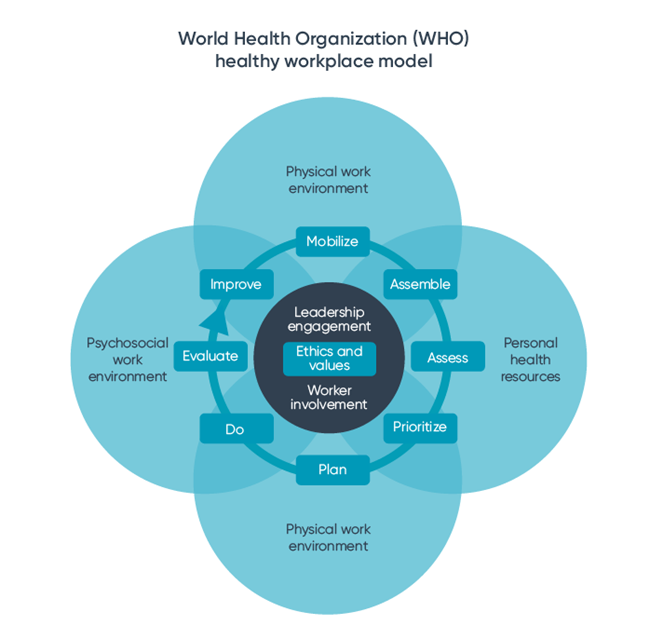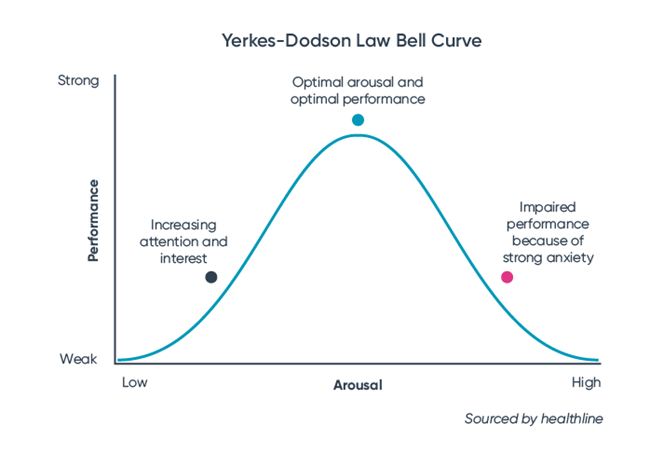ISO 45003 is a new standard that will address an important gap in health and safety guidance: psychological health and safety. This addition to the ISO 45000 family is a proactive attempt to make good mental wellbeing a core part of a company’s culture.
As the cliché goes, people are the heart of any organisation. But after a year of working from home - meeting colleagues’ children, pets and partners over Zoom - there has been more recognition that we are all people with complexities and lives outside of work. This recognition has contributed to a shift towards a more human-centered approach to managing risk, and to what should be classified as a ‘risk’. In the same way that physical ill health brings risks that could seriously impact work, psychosocial risks can be just as damaging but often harder to see.
Although organisations are increasingly recognising the need to manage psychosocial risk in the workplace, the lack of an official framework has left many organisations uncertain about how to respond to mental health issues.
ISO 45003 seeks to fill this gap in health and safety guidance, supplying clear support and advice for managing psychosocial risk within an occupational safety, health and well-being management system.
Before we take a closer look at the standard, its useful to first understand why it is so necessary.
The present situation: A mental health emergency
Even before the unprecedented events of 2020, the disturbing mental health landscape was having a clear and significant impact on global economies:
- The WHO estimated that poor mental health costs the global economy US$1 trillion annually in lost productivity.
- OECD found that stress, burnout, depression and other psychosocial risks at work are not only costly for employers and staff, but for society in general, estimated to exceed 4% of GDP. (OECD, 2018).
- Complex societal, technological and work-related transformations are having a profound impact on people’s lived experiences. Declining psychological and emotional wellbeing is affecting the wider global risks landscape (WEF, 2019).
Concern for psychological health and safety workplace has been debated and reviewed for years, but the impact of the pandemic has accelerated the matter to the forefront of leaders’ attention.
The full extent of the pandemic’s impact on mental health is still not fully understood, but has already been described as a mental health emergency. The Office for National Statistics reported early in the pandemic that 1 in 5 people reported symptoms of depression, compared with 1 in ten before. Another study by The Health Foundation found the number to be closer to 70%, with stress, anxiety and boredom driving mental health issues.
This monumental strain on mental wellbeing risks being further compounded by the many social restrictions that workplaces have had to implement due to the pandemic. The reduced physical contact between employees, their colleagues, and their workplace can often make mental distress harder to spot and even harder to manage. Taken in the wider context of reduced social contact with family and friends, this isolation can cause significant detriment to psychological wellbeing.
What is the new ISO 45003 standard?
Due for publication in summer 2021, ISO 45003 is the first global standard to give guidance on managing psychosocial risk in the workplace. Rather than official accreditation, ISO 45003 will provide guidance for organisations on the requirements of ISO 45001 with respect to managing psychological health and safety risk as part of an occupational health and safety management system.
A psychologically healthy and safe workplace is defined as one that ‘promotes workers’ psychological wellbeing and actively works to prevent harm to psychological health, including in negligent, reckless or intentional ways’.

The new standard will help organisations achieve this by building on what is covered in ISO 45001. It will help in identifying the conditions, circumstances and workplace demands that could potentially impair psychological health and wellbeing, and how to improve the working environment.
It covers:
- Guidance on how to recognise the psychosocial hazards that can affect workers, such as issues that can arise from home working.
- Examples of simple and effective actions that can be taken to manage risks and improve overall employee wellbeing.
ISO 45003 stands for a real shift away from the tendency for psychosocial initiatives to be reactive and will encourage organisations to work in a more preventive way to ensure that psychological issues do not arise in the first place.
Who is it for?
In short: everyone. The new standard will provide relevant guidance that delivers measurable benefits regardless of your current ISO 45001 status.
- ISO 45003 is designed to operate as a stand-alone standard, but it will also feed into those organisations undergoing ISO 45001, or those using an occupational health and safety management system which is based on ISO 45001.
Sally Swingewood, the lead standards development manager at BSI and a key member of drafting the new standard, advised, ‘if you’re a company doing 45001, applying elements of 45003 will help you to achieve it’.
The benefits of psychological health in the workplace
Aside from the obvious benefit of a happier, healthier workforce, managing psychosocial risks has a knock-on effect to almost every other business function. The benefits are well documented, with substantial research showing:
- Increased innovation
- Better productivity, reliability, and performance
- Better health and safety, and security
- Higher employee recruitment and retention
- Improved company reputation
- Boost employee satisfaction
- Reduce lost work time and absenteeism
- Increased profitability and bottom-line improvements
Risk factors for poor workplace psychological health
There are several common challenges to managing psychosocial risks in the workplace, such as:
- Viewing initiatives as a ‘nice to have’ activity, rather than core business
- Common belief that psychosocial risks are irrelevant to overall safety
- Tendency to focus on health promotion means skipping the first and crucial step: prevention
- Senior managers sometimes avoid early intervention with a more ‘hands off’ approach
- Competency gaps with identifying psychosocial hazards
- Non-systemic approaches
- Jargon and multiple terms used interchangeably
The new ISO 45003 standard is purposefully designed to address and correct these challenges. It is concerned with managing psychosocial risks, and a large part of that comes from early identification of risk factors, such as:
- Unfair treatment
- Excessive workload
- Unfulfilling work
- Discrimination
- Poor physical work environment
- High demand and/or low control
Too much stress and too little stimulation can each hinder psychological health. Psychologists Yerkes and Dodson found a bell-curve relationship between mental stimulation (arousal) and performance (see graph below). Peak performance occurs when someone experiences the best amount of ‘stress’ in the workplace, wherein they do not suffer from undue anxiety but feel motivated.

Communication and facilitating an open and honest culture wherein employees feel empowered to speak up about their struggles are crucial. For many health and safety professionals, psychosocial health and wellbeing is an entirely new world.
Ideagen are here to help your organisation prepare for ISO 45003. Talk to us to find out how the new standard can benefit your organisation.

